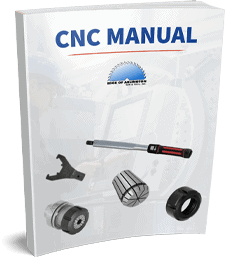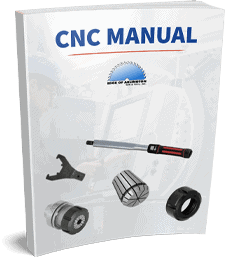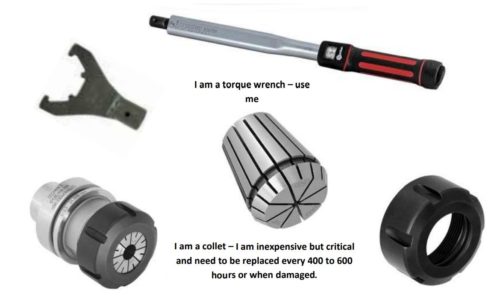CNC Routers: Things to Avoid
Comments Off on CNC Routers: Things to AvoidUnderstanding the different variables involved in CNC routing can be overwhelming, especially to anyone new
to CNCs. That is why Edge of Arlington Saw & Tool is here to help you in selecting the proper tool for the job.
Don’t let the complexities involved keep you from maximizing tool life, machine time, and profits—help is only
a phone call away.
• Dead stops, also known as “dwelling in the cut,” can lead to premature tool wear and failure. When
changing directions of travel or when cutting small pieces, a one second stop at 18,000 RPM generates
enormous heat and no means of extraction. Imagine rubbing your hands together 300 times per
second—a sure way to form a blister. This is more of a machinery and software issue. Certain
programming techniques can help to compensate, such as ramping, use of loops at sharp outside
corners, and the use of exit ramps.
• Plunge cutting. While this is the oldest and most widely used method of entering the material, it is not
always the most efficient. Plunge cutting can lead to chips wrapping around the router bit after
repeated plunges. Whenever possible you should Ramp into the cut. This eliminates the heat
generated during the plunging process and can eliminate burn marks at the plunge point. Plunging can
also cause the bit to “walk” because there is no centering point—this will be evident as ovals, holes,
and entry points larger than the diameter of the tool. If you cannot ramp in, a good alternative is to
plunge down outside of the workpiece and enter from the side. Spiraling in can also help. Whatever it
takes to keep the router bit moving.
• Routing holes is never the optimum choice. Use drills for drilling, routers for routing. Drills turn at
much lower RPM than routers do. Router bits generate too much heat when drilling. Drilling just a
couple of holes per sheet will significantly reduce the life of your tooling. In fact, you will dull more
drilling the two holes than cutting the entire piece. If you do not have drill heads to take advantage of
European type boring bits, turn the RPM down as low as possible, 4,000-5,000 RPM at most, and
plunge as fast as possible. An upshear will help to remove the chips if hold-down is not a problem. On
deep holes “pecking” can sometimes help.
• Small parts and scrap pieces can become projectiles if left after the cutting process without sufficient
hold-down. They can also be sucked into the dust collector and cause a blockage. Skin cutting and the
use of tabs can help to hold small parts.
• Over tightening of the collet and collet nut is a common mistake. Most operators assume that the
tighter the better—this is not true and can lead to premature tool and collet wear and tool breakage.
Collets are the most misunderstood and overlooked part of the CNC, often the cause of poor finish,
short tool life, and unnecessary machine wear. Collets are made of spring steel and are subject to
distortion when put under undue pressure. It is highly recommended that collets be tightened to
manufacturers’ specifications with the use of a torque wrench.
• Fires—yes it happens. A tool left in the same place for enough time can and will start a fire. It is
important never to leave a CNC running without an operator. You wouldn’t believe how fast things can
go wrong. The dust collection system and the vacuum system will aid in the fires speedy travel. If this
ever happens to you, beware of flash-back when the vacuum is turned off. When it is safe to do so, it is
important to remove and examine the bleeder board and table underneath, as embers can remain and
once again flair up.
For more, download our free CNC Manual.



 • Over-tightening of the collet and collet nut is a common mistake. Most operators assume that the tighter the better – this is not true and can lead to premature tool and collet wear and tool breakage. Collets are the most misunderstood and overlooked part of the CNC, often the cause of poor finish, short tool life, and unnecessary machine wear. Collets are made of spring steel and are subject to distortion when put under undue pressure. It is highly recommended that collets be tightened to manufacturers’ specifications with the use of a torque wrench
• Over-tightening of the collet and collet nut is a common mistake. Most operators assume that the tighter the better – this is not true and can lead to premature tool and collet wear and tool breakage. Collets are the most misunderstood and overlooked part of the CNC, often the cause of poor finish, short tool life, and unnecessary machine wear. Collets are made of spring steel and are subject to distortion when put under undue pressure. It is highly recommended that collets be tightened to manufacturers’ specifications with the use of a torque wrench